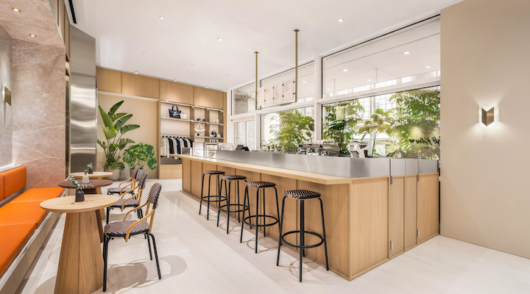The rapidly rising ranks of Vietnam’s uber-rich are fueling growing demand for luxury goods in the fast-growing economy.
The number of ultra high net worth individuals (UHNWI) in Vietnam is predicted to double to 300 by 2024, according to the Knight Frank Wealth Report 2015.
The increase of 159 per cent makes Vietnam the country with the fastest growing population of persons with a net worth of more than US$30 million, followed by another ASEAN member state, Indonesia (132 per cent). Ultra-rich individuals in Asia hold net assets of US$5.9 trillion, now even surpassing North America’s US$5.5 trillion. Furthermore, the report predicts that cities across Asia will see an increase of 91 per cent of UHNWIs in the next decade.
But not only the uber-rich are on the rise: according to Euromonitor International more than 100,000 Vietnamese in 2013 had a disposable income of more than US$75,000 per year. As in China, the highly affluent in Vietnam are constantly looking for opportunities not only for investing their money, but also to spend it.
A survey conducted by Nielsen concluded that Vietnam ranks third in the world in terms of fondness for branded goods, only surpassed by China and India. Moreover, 56 per cent of the participants responded that they are willing to pay more for designer products than for less known brands despite same functionality.
Another study by the Japanese advertising agency Hakuhodo found that female consumers in Ho Chi Minh City are the only customers in Southeast-Asia that preferred design over functionality.
All that is driving a Vietnam luxury boom, with growth especially prevalent in jewellery, fashion, cars and wine…
Gold and Jewellery
Although demand in gold and coins in Q4 of 2014 has dropped 15 per cent to 13.3 tones (amounting for US$514 million) compared to the same period in 2013, Vietnam remains the world’s seventh largest gold consumer. Bullion, historically one of the most inflation-resistant investments allowed people to save and pass these savings on to children and their family. Gold also has a cultural significance in Vietnam: The fifth day of the first month of the lunar year, the so called God of Wealth day traditionally pushes gold prices up in Vietnam and customers queue up in front of stores for hours to have a chance to buy the desired metal, hoping for good fortune all year.
Recently, the government changed its policy regarding the hoarding of gold bars, issuing a ban on interests on gold deposits when stored in financial institutes and releasing regulations to turn the central bank into the sole importer of gold bars.
Formerly, many real estate purchases were conducted using gold as a payment method. Listing housing prices in gold was common practice in Vietnam, until in 2011 the State Bank issued a decree imposing fines on advertising goods, services and property in foreign currency or gold.
Being a country rich in gemstones, especially jade, sapphires and topaz, jewelry is especially popular in Vietnam. In 2014, jewellery worth US$519 million was traded, a decline of eight per cent from 2013, though demand was still higher than in other Asian countries with higher GDP per capita including Thailand and South Korea (US$250 and 382 million, respectively). At this time, licensing restrictions limit joint ventures to manufacture jewellery for export only. The popularity and demand of jewellery, combined with the fact that it has to be imported, is a unique opportunity for foreign investors.
Fashion
The market for apparel in Vietnam is predicted to reach US$4.2 billion by 2017, according to Euromonitor International’s forecasts. Among the first high-end fashion brands in Vietnam was the French company Louis Vuitton, and since 1997 many followed: Dior, Burberry, Ermenegildo Zegna, Bulgari, and Hermes, only to name a few. It was a profitable decision: the Hermes boutique in Hanoi, opened in 2008, increased its profits gradually by 20 to 30 per cent each year.
Salvatore Ferragamo opened up it’s fifth store in Vietnam two years ago. Other luxury brands are operated under a franchise system, such as Loewe, Marc Jacobs, Givenchy and Balenciaga, which monobrand stores are operated by a single partner. There are of course risks involved; the official partner of Gucci was investigated for tax evasion in 2010.
Cars
Several luxury car brands have established themselves within Vietnam in the recent years, including Lamborghini, Jaguar, Bentley and Rolls-Royce. Customers benefit from these permanent establishments within the country, since previously they had no other chance than importing them at a costly price through dealers and were forced to pay exorbitant maintenance fees because of the lack of licensed service providers.
Other manufacturers, who are not new players to the Vietnamese market are reporting positive figures. Mercedes Benz entered the country’s market 20 years ago, and sold 1106 units in the first six months of 2014, marking a 70 per cent increase over the same period in 2013. Earlier this month, Mercedes-Maybach, the relaunched luxury brand from Daimler reported 10 orders for its S600 model, which costs VND9.6 billion (US$451,850). Notably, only 50 units of that model will be produced worldwide in 2015.
Most affluent customers own more than one car, and due to Vietnam’s heavy traffic and shortage of car parks a lot of them rely on a driver. Customers may care as much about the amenities in the back seats, than technical gadgets on the dashboard.
Automobile manufacturers will have to face a challenge when inner-ASEAN import tariffs will be cut to zero per cent in 2018. Imported, completely built units from Thailand and Indonesia, where a lot of companies already have established factories will be cheaper than cars partly assembled in Vietnam.
Wine
While young Vietnamese obtain more purchasing power, consumption of wine is rising. As of 2012, France held the lion’s share of the Vietnamese wine market at 35 per cent, with it’s biggest contender being Chile, accounting for 20 per cent, followed by Australia, the US and Italy.
However, Chilean market share is expected to grow over the next years due to the Chile-Vietnam free trade agreement (FTA), that took effect in January 2014. Import tax on Chilean wine has dropped from 56 per cent to 20 per cent and until 2030 will approach zero, similar to the abolition of tariffs on Chilean wine imported to China, earlier this year. The Chile-Vietnam FTA marks the first agreement of its kind for Vietnam with a Latin-American country.
When importing to Vietnam from a country or territory without an FTA in place, import duty applied to wine with alcoholic strength not exceeding 15 per cent is 50 per cent, and is further taxed with a 10 per cent VAT. Only licensed importers are permitted to import wines into Vietnam. Apart from a few multinationals, most bottles are imported by small businesses, either directly, if licensed, or via regular importing companies on a fee-based basis, usually 2-3 per cent over the total contract value.
Vietnam leads in Southeast Asian alcohol consumption with around US$3 billion spent on alcohol every year, and the industry still has a lot of room for growth.
Republished with permission of Asia Briefing Ltd, a subsidiary of Dezan Shira & Associates. Dezan Shira is a specialist foreign direct investment practice, providing corporate establishment, business advisory, tax advisory and compliance, accounting, payroll, due diligence and financial review services to multinationals investing in China, Hong Kong, India, Vietnam, Singapore and the rest of ASEAN. For further information, please email vietnam@dezshira.com or visit www.dezshira.com.
Stay up to date with the latest business and investment trends in Asia by subscribing to a complimentary update service featuring news, commentary and regulatory insight.






